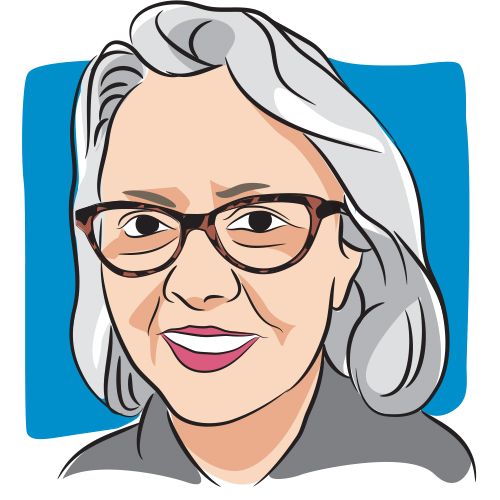Article
A Personal Choice: Lumpectomy or Mastectomy
Author(s):
Treatments and surgeries are a personal choice. Patients should talk with doctors and other patients and survivors to determine what is best for them.
I’m going on three years since being diagnosed with breast cancer. Being cancer-free, I haven’t learned everything, but I did learn a lot about breast cancer and the choices patients with the disease make.
I feel very fortunate to be cancer-free, but most importantly, I feel good about the choices I made about procedures following diagnosis. I educated myself about my choices and met with individuals I felt comfortable with. Treatments and surgeries are a personal choice to be made alongside educated and supportive staff, as well as testing results, which may serve as a guide to options. Such choices are not to be taken lightly.
I hope to share my experience to help others who have difficult choices to consider. I have unfortunately met women who are not educated about their choices and, as a result, are sometimes unhappy following treatments and procedures. So, my biggest tip is to ask around and, if needed, see more than one oncologist and surgeon.
It was initially suggested I have a lumpectomy followed by radiation and chemotherapy. I told friends I was interested in what Angelina Jolie shared regarding her procedures and surgery, which included nipple and areola sparing. While Angelina Jolie shared openly that she did not have cancer, I admired her honesty and bravery to consider choices which are sometimes looked down upon as being "overly aggressive." During my own journey, I have met individuals who are called "previvors." They are men or women who take proactive measures to have a mastectomy and/or hysterectomy due because they have a high probability of developing cancer later in life, shown by to family history and genetic testing.
I opted for what many refer to as the Angelina Jolie procedure. I was scared because it came with many risks, as my surgical oncologist and plastic surgeon pointed out. The procedure was much longer and more complicated than a typical mastectomy, and for the procedure to be successful in sparing the nipple and areola, it required my plastic surgeon to work with care and caution to maintain proper blood flow during and after surgery, so that my own skin and tissue would not die. My team included my plastic surgeon, who I had known prior to my being diagnosed with cancer, and a surgical oncologist I had been referred to.
Fortunately for me, I was keenly aware that my plastic surgeon specialized in breast augmentation and reconstruction. He was not able to tell me what to do, but he did offer me guidance and answered very important questions I had before only having a lumpectomy. He also stated there would be no guarantees with any surgery that I would choose, and the most important thing was getting rid of or greatly reducing my chances of recurrence. I have a strong history of cancer in the limited family history I am aware of. Only a couple of years before being diagnosed with breast cancer, I had a successful hysterectomy which indicated that I may have avoided cancer per the results found in a biopsy. At that time, I thought about how fortunate I was. So, choices go back to assessing our risk for cancer, knowing our family history when possible, and when not possible, having genetic testing to help in making decisions and offering guidance.
I am grateful to my plastic surgeon and oncologist for having worked so well together and for Angelina Jolie for bringing to light options that individuals can consider. I have heard comments such as, “But she has money and average women can't consider such procedures.” I encourage women not to assume things and to investigate options with your insurance company. Read the fine print regarding benefits. Some plans may include a catastrophe deductible, which means that after a certain amount is paid out, all or most of medical costs for the rest of the year are covered. I was fortunate and had a great deal of help and coverage for such a procedure. Contact your insurance provider. You might be surprised.
I have heard comments about nipple- and areola-sparing surgery leading to a greater chance of recurrence. I was happy to read in an article published by CURE in 2017 that said that may not be true. However, I do feel the option to have nipple- and areola-sparing surgery also depends on the location of the cancer, the type and where it has already potentially spread. My surgical oncologist supported my choice by stating that he was not aware of any difference in recurrence. Yes, I could have opted for a lumpectomy, but where the cancer was located, I risked burning from the radiation and having potential permanent damage which, if the cancer did come back, I would not be able to go back later and likely have a successful nipple- and areola-sparing surgery. With a lumpectomy, I would have also had to go in every six months for up to five years for exams and procedures to determine if the cancer had come back. I decided that if I do have limited time, I merely want to enjoy it as much as possible. I have a little relief not having to be scanned and probed every six months, and presently just follow up annually with my oncologist.
None of us has a crystal ball, but if you’re newly diagnosed, I encourage you to consider the option you feel you can live with if you have more than one choice. Talk to others about choices they have made and how they feel about their experience and outcome.




